How to Fix AirPods Paired but won’t Connect
Your AirPods might be paired but not connected if the OS/firmware of your devices is outdated. Moreover, the wrong configuration of the Bluetooth adapter or your PC may also cause the error under discussion.
The user encounters the issue when he tries to connect his AirPods to his system, although, the devices pair successfully but the devices would not connect. The issue is majorly reported after a Windows update.
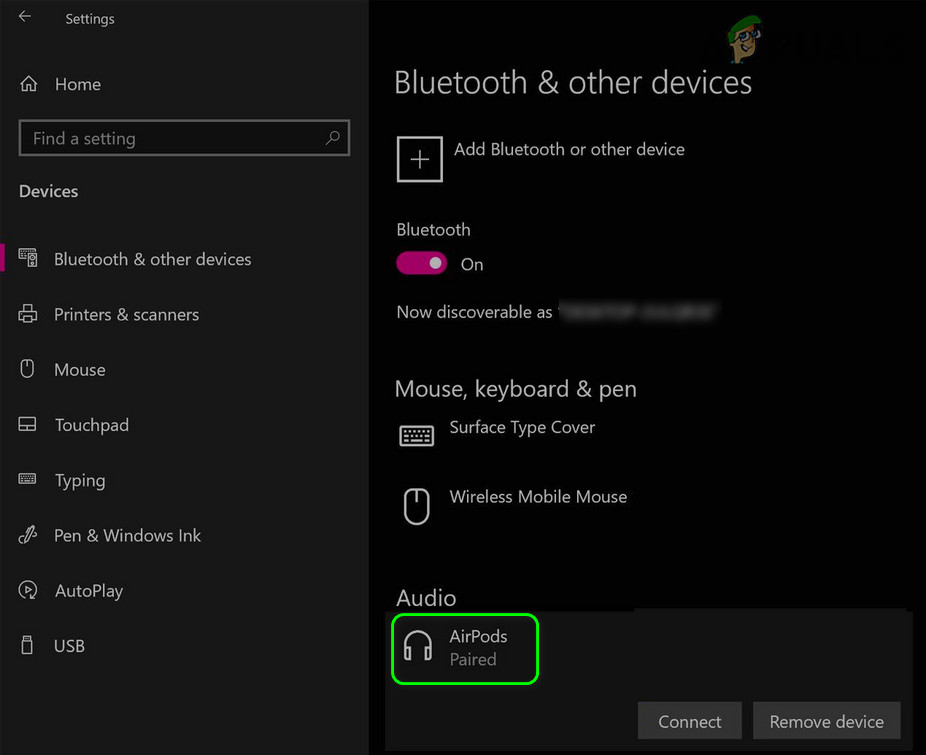
Before moving on with the troubleshooting process to fix AirPods not connecting, restart your PC while the AirPods are in your ears to check if it solves the AirPods issue. Moreover, disable Bluetooth on all the Apple devices in the vicinity & check if the AirPods issue is resolved. Furthermore, check if re-pairing (case lid open while keeping AirPods in the case ) the devices solves the issue. Also, make sure you are signed in to your Microsoft account in the system’s Settings. Last but not least, make sure to have a detailed look on Fix: Bluetooth paired but not connected.
Solution 1: Use the Hardware and Bluetooth Troubleshooters
Microsoft has bundled Windows with the common system troubleshooters. You can use the built-in hardware & Bluetooth troubleshooters to solve the AirPods issue.
- Press the Windows logo key and search for the Command Prompt. Then, in the results pulled by the search, right-click on Command Prompt and select Run as Administrator.

Open Command Prompt as Administrator - Now execute the following:
msdt.exe -id DeviceDiagnostic

Open Hardware Troubleshooter - Then follow the prompts on your screen to complete the operation of the Hardware troubleshooter & check if it sorts out the AirPods issue.

Hardware and Devices Troubleshooter - If not, then hit the Windows key and choose Settings. Now select Update & Security and then, in the left pane of the window, choose Troubleshoot.
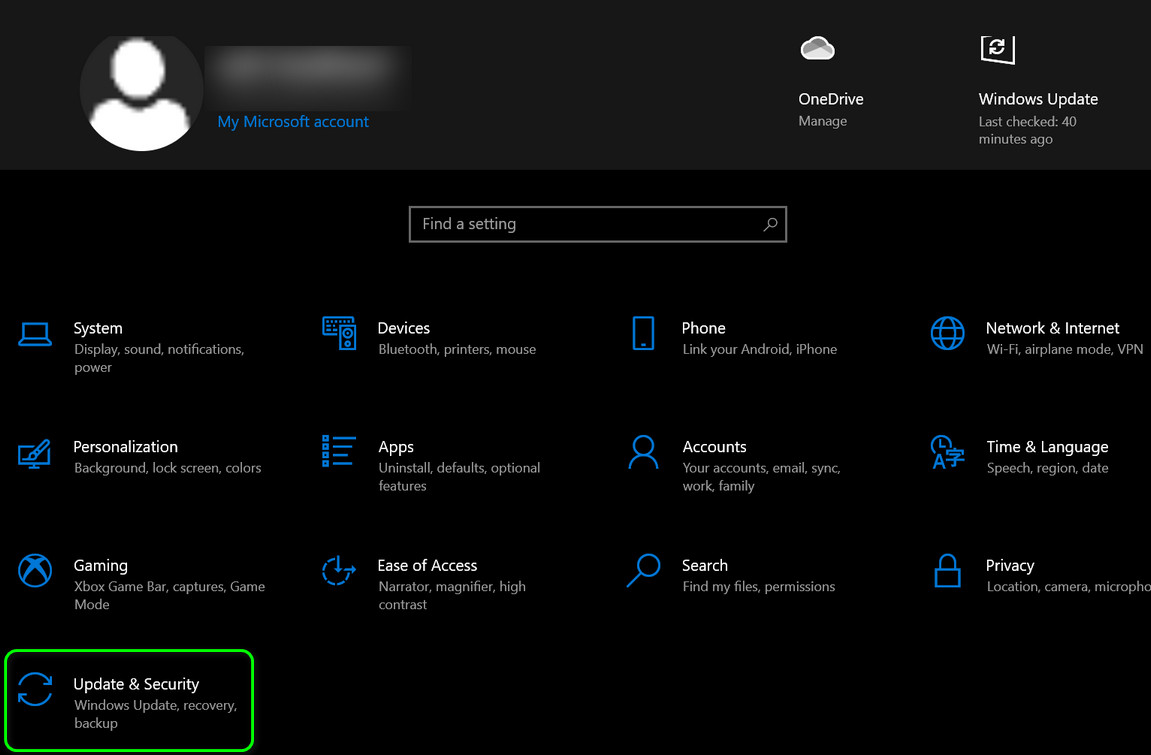
Open Update & Security - Then choose Additional Troubleshooters (in the right pane of the window) and expand Bluetooth.
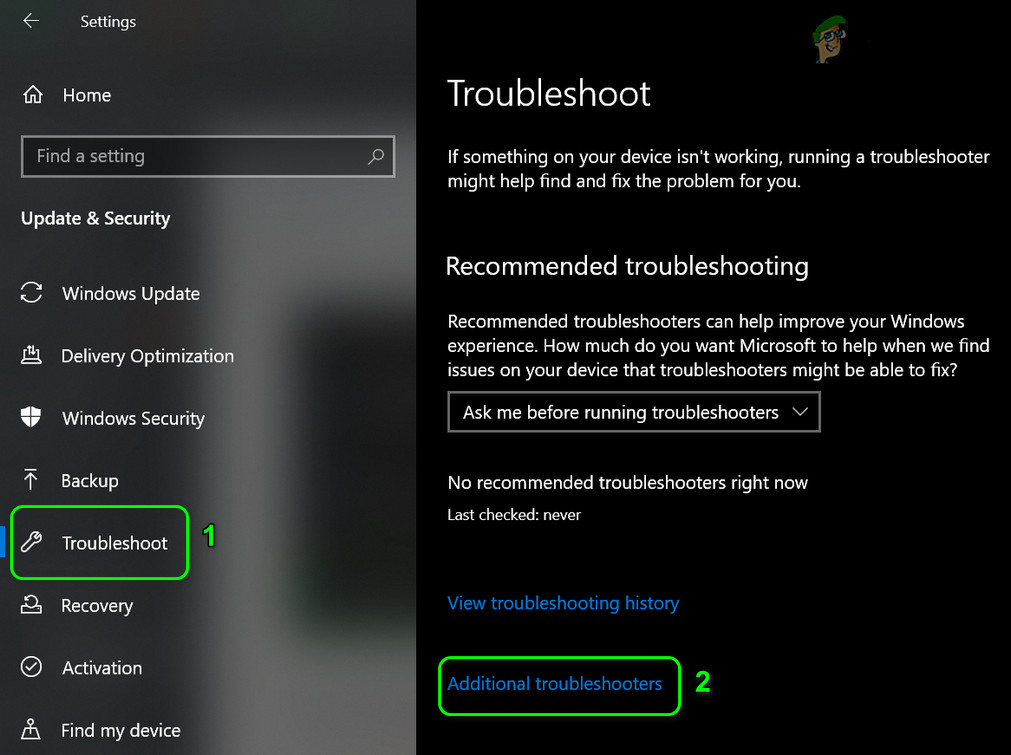
Open Additional Troubleshooters - Now click on the Run the Troubleshooter and follow the prompts on your screen to complete the Bluetooth troubleshooter.

Run the Bluetooth Troubleshooter - Then check if the AirPods are operating normally.
Solution 2: Adjust Your PC for Best Performance
Many users tend to adjust their PC for best visual effects which may degrade some of the performance aspects of the system including the Bluetooth communications and thus cause the error under discussion. In this case, adjusting your PC for best performance may solve the problem.
- Press the Windows key, search, and open Advanced System Settings.

Open Advanced System Settings - Now click on the Settings button under Performance and choose Adjust for Best Performance.
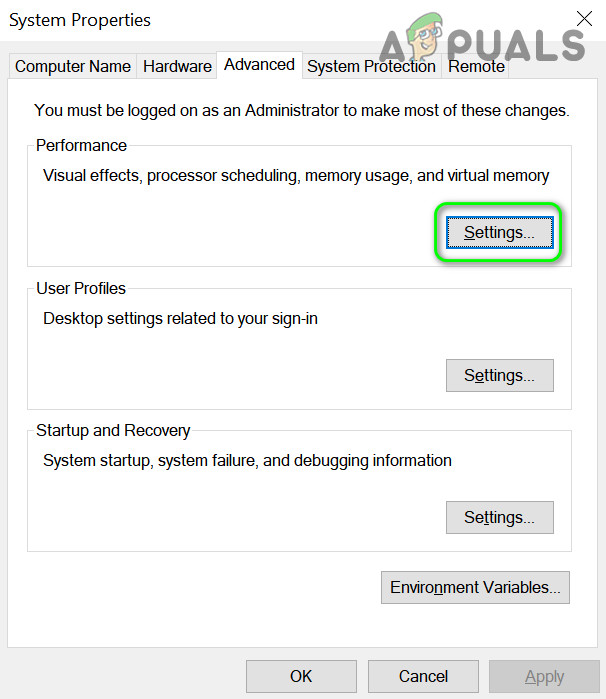
Open Performance Settings in Advanced System Settings - Then click on the OK button and check if the AirPods are working fine.
Solution 3: Disable the Swift Pair Feature
The Swift Pair feature is added to Windows 10 to enable a user to quickly connect Bluetooth peripherals to your system. But this feature is known to hinder the operation of AirPods and thus cause the error at hand. In this context, disabling the Swift Pair feature may solve the problem.
- Press the Windows logo key and open Settings. Now open Devices and uncheck the option of Show Notifications to Connect Using Swift Pair.
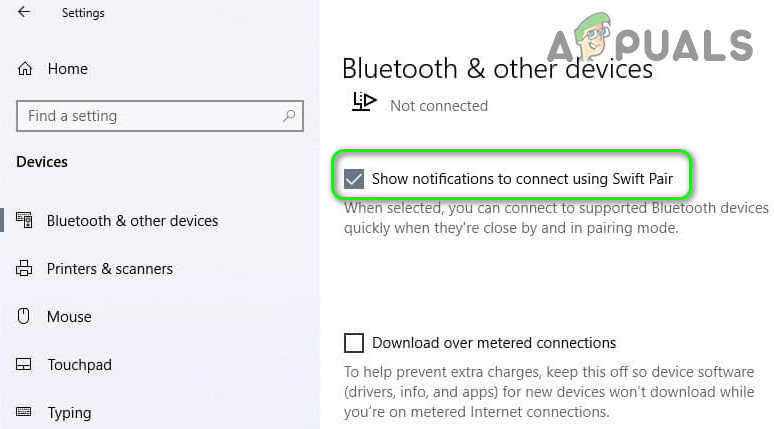
Show Notifications to Connect Using Swift Pair - Then reboot your system and check if the AirPods are clear of the error.
Solution 4: Update the OS/Firmware of Your Devices
Microsoft and Apple keep on updating the OS/Firmware of their devices to cater to the latest technological advancements and patch the reported bugs. Your AirPods might not function properly if the OS/Firmware of your devices is outdated. In this scenario, updating the OS/Firmware of your devices may solve the problem.
- Manually update the Windows of your PC to the latest build and check if AirPods are working fine.
- If not, then put the AirPods in their charging case and bring them close to your iPhone.
- Now, open the lid of the case and dismiss the notification on the iPhone’s screen.
- Then launch the iPhone’s Settings and open General.
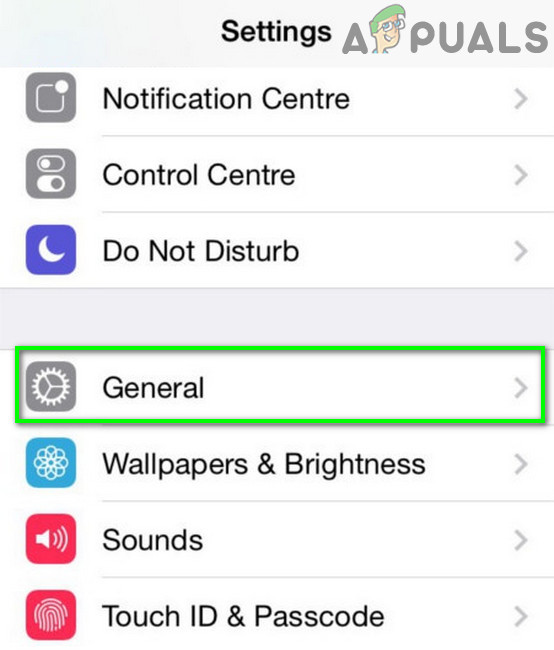
Open General Settings of iPhone - Now select About and click on AirPods.

Open AirPods in the About of Your iPhone - Then check the Firmware Version of your AirPods. Now check on the internet for the current version of the AirPods firmware.

Check Firmware Version of AirPods - If your AirPods are not updated to the current build, then put the AirPods in their case and start charging the case.
- Now place the case near your iPhone (make sure the iPhone has an active internet connection) and open the lid of the case.
- Then dismiss the notification of the screen of your phone and then wait for at least one hour.
- Now check if the firmware of AirPods is updated. If so, then re-pair the AirPods with your PC to check if the AirPods issue is solved.
Solution 5: Edit Bluetooth Low Energy (B.L.E.) Settings of Your System
Bluetooth Low Energy (BLE) allows devices to communicate with BLE devices (having stricter power requirements) like fitness devices, heart rate monitors, and proximity sensors. You may encounter the error at hand if the Bluetooth Low Energy of your system is not configured properly to work with the AirPods. In this case, editing the BLE settings of your system to streamline the operation between the AirPods and your system may solve the problem. But keep in mind that you may have to repeat these steps after every Windows update (if you encounter the issue again).
- Simultaneously press Windows + X keys to launch the Quick Access menu and select Device Manager.
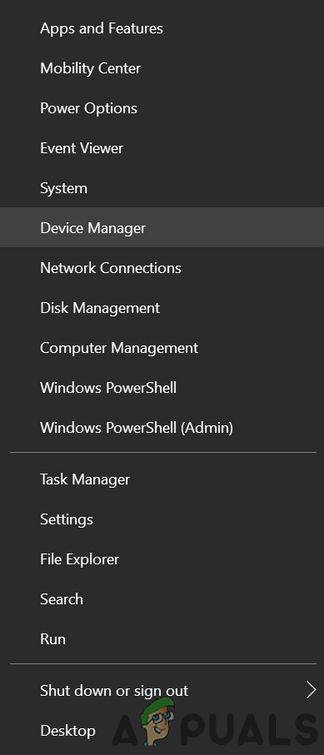
Open Device Manager - Then, expand Bluetooth and right-click on Microsoft Bluetooth LE Enumerator.

Disable Microsoft Bluetooth LE Enumerator - Now select Disable and then reboot your PC after closing the Device Manager.
- Upon reboot, check if the AirPods issue is resolved. If not, open the Device Manager (step 1) and expand Human Interface Devices (HID).
- Now right-click on Bluetooth Low Energy GATT Compliant HID and choose Properties (if that device is not available, then proceed with the Converted Portable Device Control Device).
- Then steer to the Power Management tab and uncheck the option of Allow the Computer to Turn Off This Device to Save Power (if the said option is already unchecked, then enable/apply it and then uncheck it).
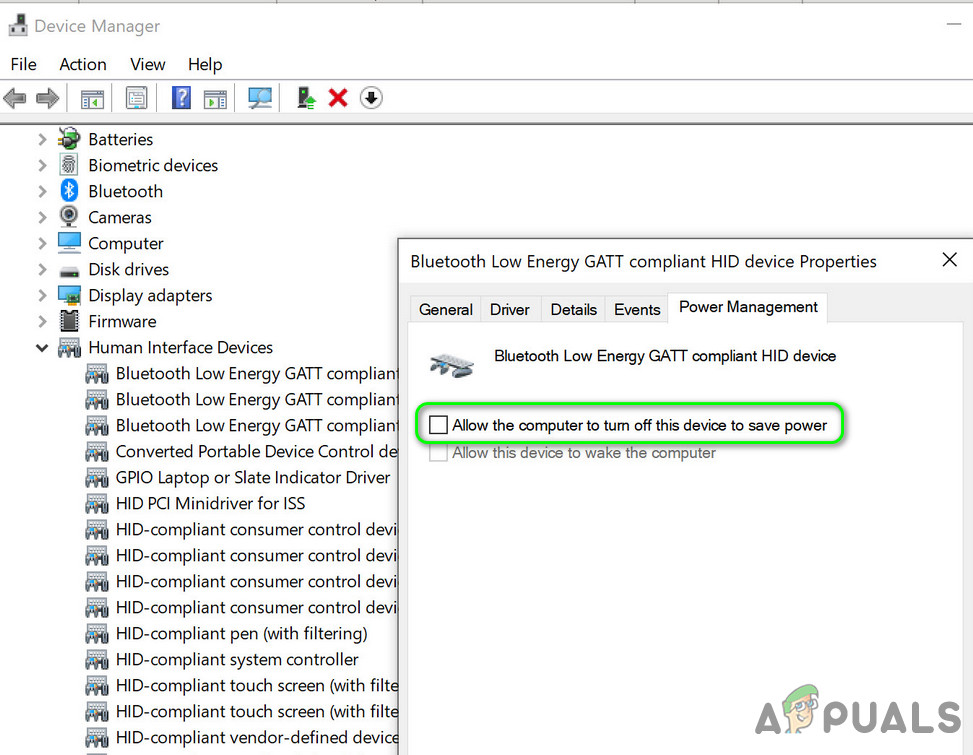
Disable Power Management by PC for the HID Device - Now click on Apply/OK buttons and repeat the same for AirPods Audio/Video Remote Control HID and AirPods Hands-Free Call Control HID.
- Then check if the AirPods are working fine.
- If the issue persists, then you may try to repeat the same for all the Bluetooth Devices in the HID tab of the Device Manager and check if the AirPods issue is resolved.
Solution 6: Uninstall the Buggy Update
You may encounter the error at hand as a result of a buggy system update. In this context, removing the buggy update may solve the problem.
- Press the Windows key and open Settings. Then open Update & Security and select View Update History.
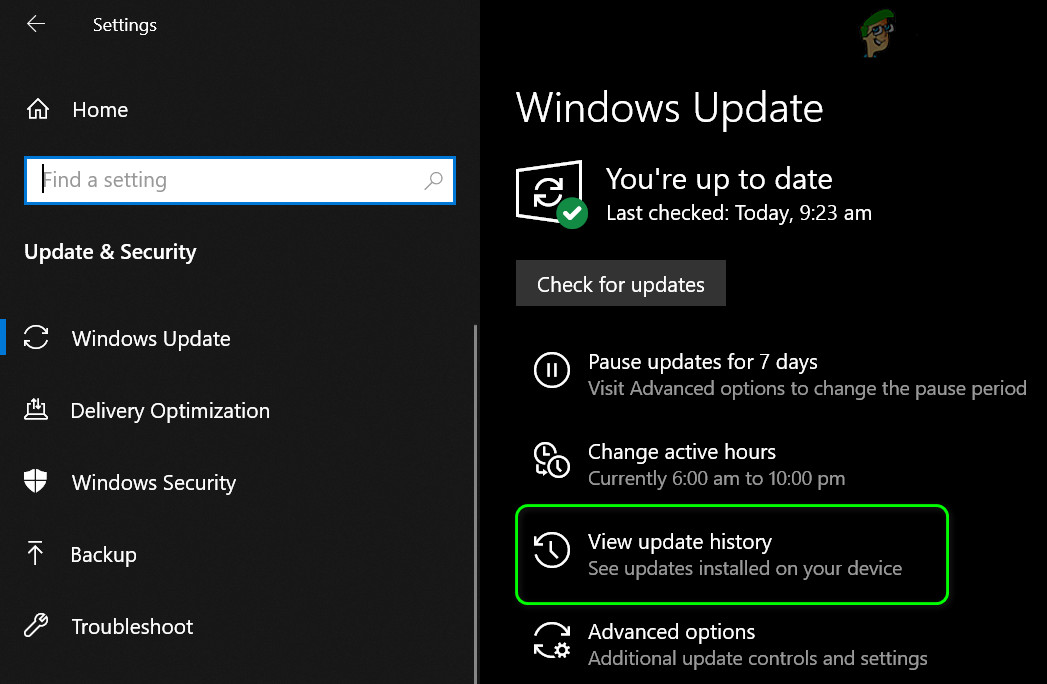
View Update History of Your System - Now click on Uninstall Updates and then select the buggy update (Microsoft Edge updates are known to create the issue).
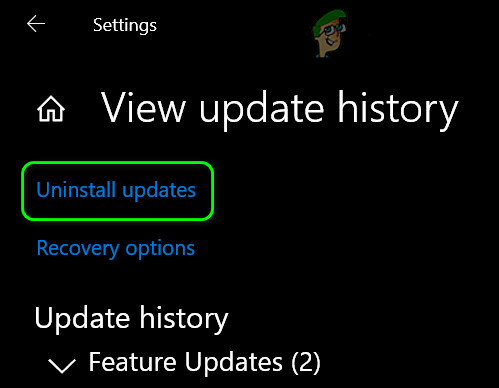
Open Uninstall Updates - Then click on the Uninstall button and follow the prompts to uninstall the update.
- Again, open the system’s Settings (step 1) and select Apps.
- Now expand Microsoft Edge Update and click on the Uninstall button to uninstall the update.

Uninstall Microsoft Edge Update - Then reboot your system and check if the AirPods issue is resolved.
Solution 7: Disable the Fast Startup of Your System
When the Fast Startup is enabled, your PC does not completely shut down but it goes into a mixed state between hibernation and power-off states. This feature enables the system to boot fastly when powered-on. But this option may break some network-related (including Bluetooth) operation and thus cause the AirPods issue.
- Click on the Windows button and choose Settings. Now open System and select Power & Sleep.
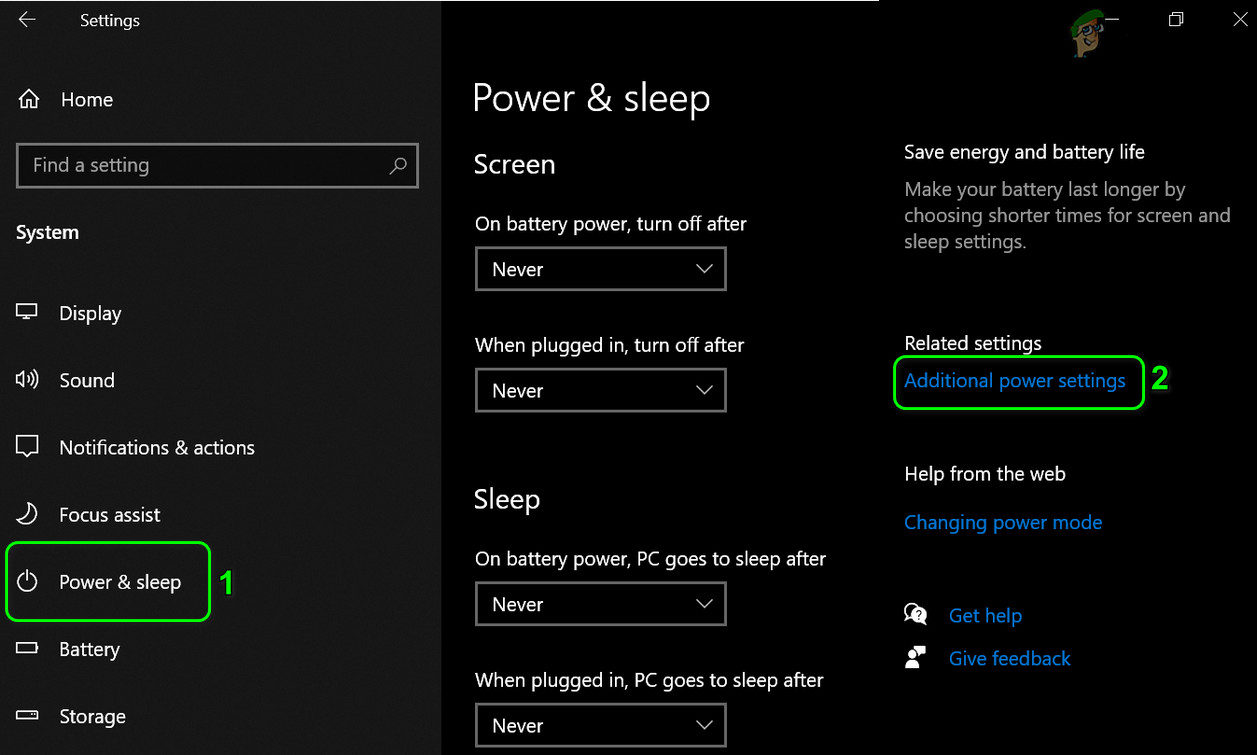
Open Additional Power Settings - Then click on Additional Power Settings (in the right half of the window) and select What the Power Buttons Do (in the left half of the window).
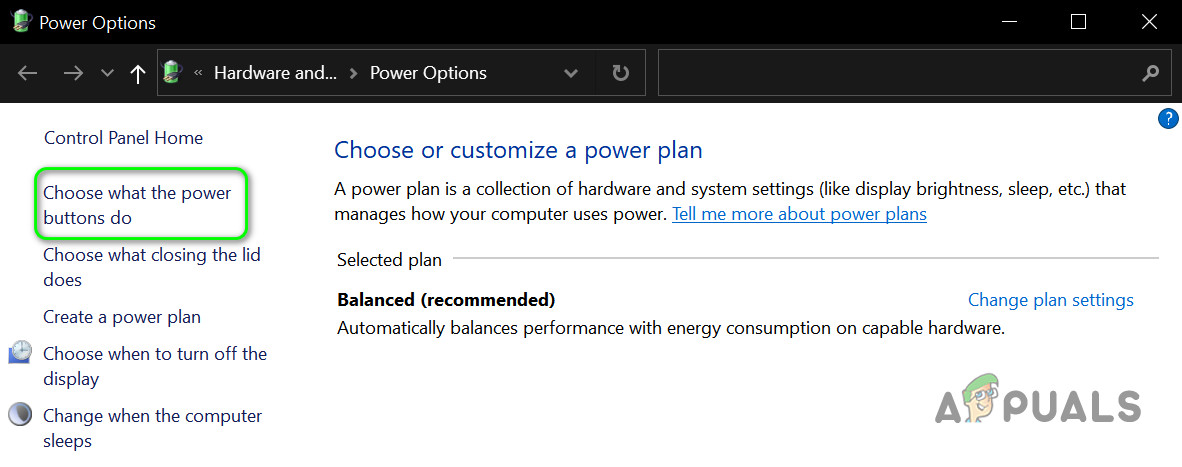
Open Choose What the Power Buttons Do - Now click on “Change Settings That Are Currently Unavailable” and uncheck the option of Turn on Fast Startup.
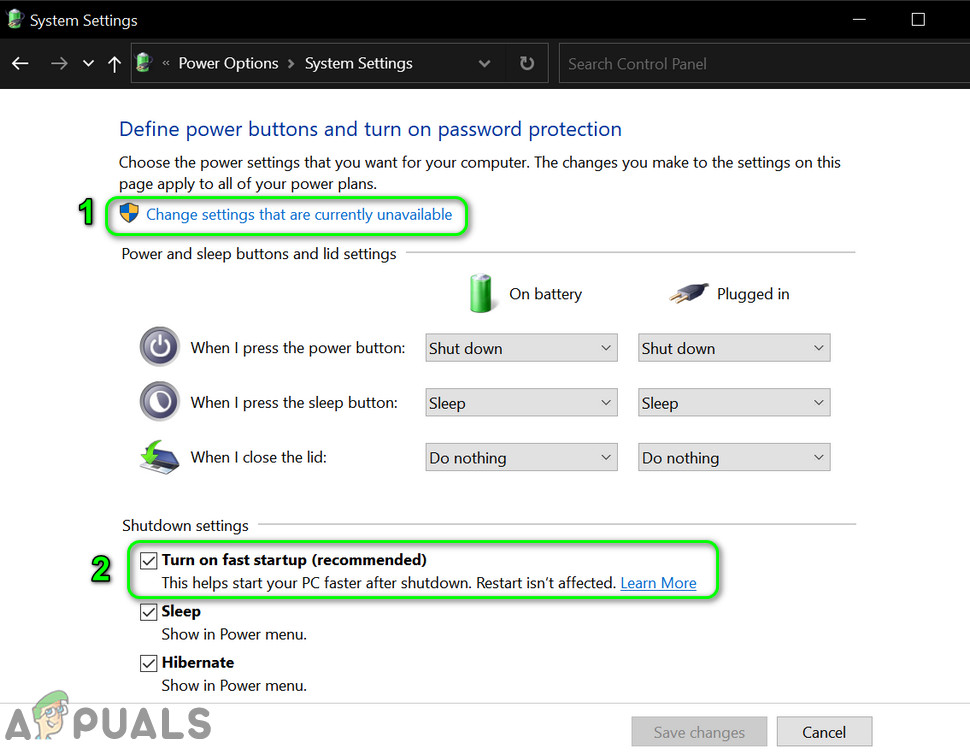
Disable Fast Startup - Then save your changes and reboot your PC to check if the AirPods issue is resolved.
Solution 8: Remove and Re-add the AirPods to Your System
The AirPods issue could be a result of a temporary glitch in the Bluetooth communication modules. The glitch can be cleared by removing and re-adding the AirPods may solve the problem.
- Unpair the system with all the Bluetooth devices including the AirPods. Now right-click on the Windows button and in the resulting menu, choose the Device Manager.
- Then open the View menu and choose Show Hidden Devices.
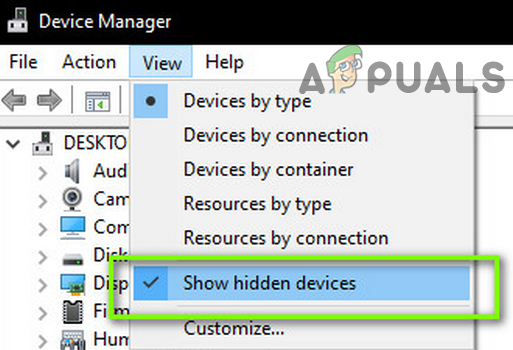
Show Hidden Devices in Device Manager - Now expand Bluetooth and right-click on any of the greyed-out devices. Then click on Uninstall and follow the prompts on your screen to remove the device.
- Now repeat the same to remove all the hidden (greyed out) devices and reboot your PC. Check if the AirPods can successfully connect to your system.
- If not, then remove all the instances of AirPods from the Sound, Video, and Game Controllers, System Devices, and Bluetooth in the Device Manager.
- Now press the Windows key and select Settings. Then open Devices and then remove the AirPods.

Remove the AirPods - Now uninstall all the external Bluetooth adapters and Bluetooth network adapters (internal/external) from the Device Manager.

Uninstall Bluetooth Network Adapter - Now reboot your PC and pair the AirPods with the system.
- Then press the Windows logo key and in the Windows Search bar, type Control Panel. Now, select the result of the Control Panel. Now open Hardware and Sound and click on Devices and Printers.
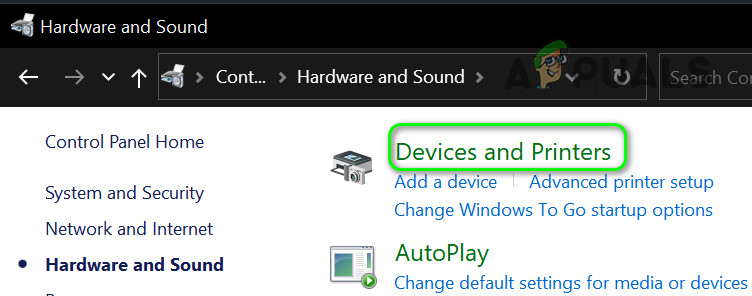
Open Devices and Printers - Then right-click on the AirPods headphone icon and choose Properties.
- Now steer to the Sound settings tab and right-click on the AirPods headphones (stereo or handsfree).
- Now click on Connect and then check if the AirPods are working fine.
Solution 9: Edit the System’s Registry
You may encounter the error at hand if your system’s registry is not configured properly. In this case, editing the relevant registry values may solve the problem.
Warning: Proceed with extreme caution and at your own risk as editing the system’s registry needs a certain level of proficiency and if not done properly, you may expose your system and data to threats.
- Create a backup of your system’s registry.
- Now press the Windows logo key and in the search, type Registry Editor. Then, right-click on the result of the Registry Editor and choose Run as Administrator.
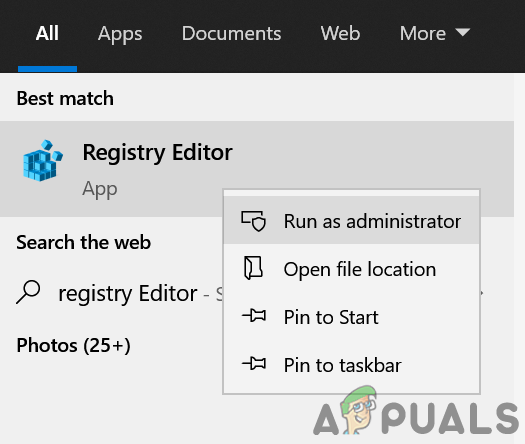
Open Registry Editor as Administrator - Now navigate to the following path:
Computer\HKEY_LOCAL_MACHINE\SYSTEM\ControlSet001\Control\Class\{e0cbf06c-cd8b-4647-bb8a-263b43f0f974} - Now right-click in the white space (in the right pane of the window) and choose New.

Create a New String Value - Then select String Value and name it PnPCapabilities.
- Now double-click on PnPCapabilities and set its value to 24.
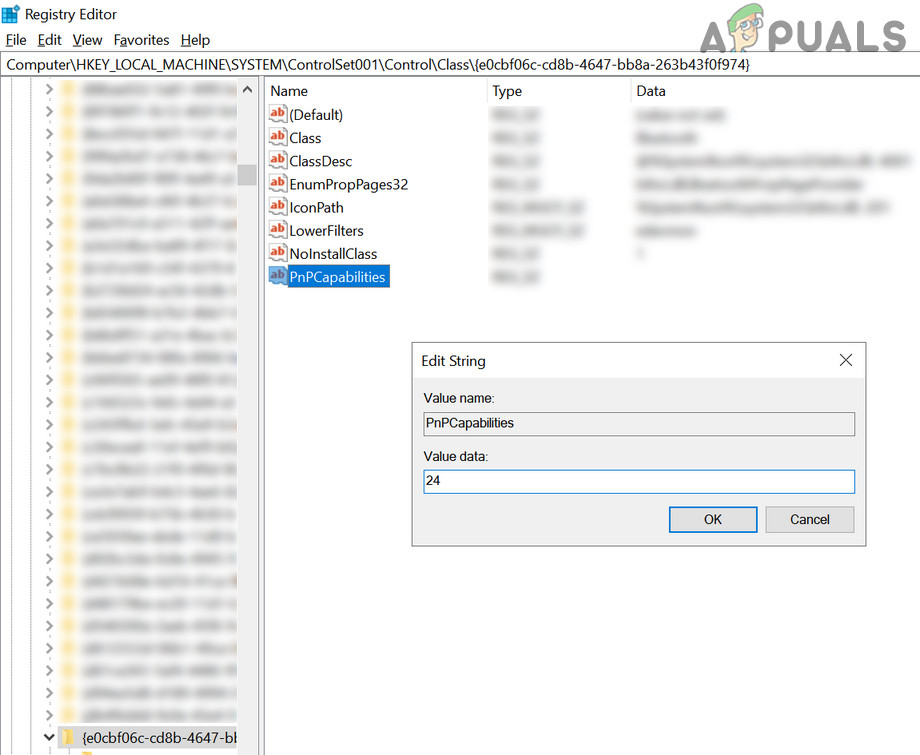
Set the PnPCapabilities Value to 24 - Then restart your system and upon restart, hopefully, the AirPods issue is resolved.
If the issue is still there, then check if using an external Bluetooth adapter (at least Bluetooth 4.0) like Jabra Link solves the issue. You can also try to reset the AirPods to the factory defaults and check if that was the root cause of the issue.





